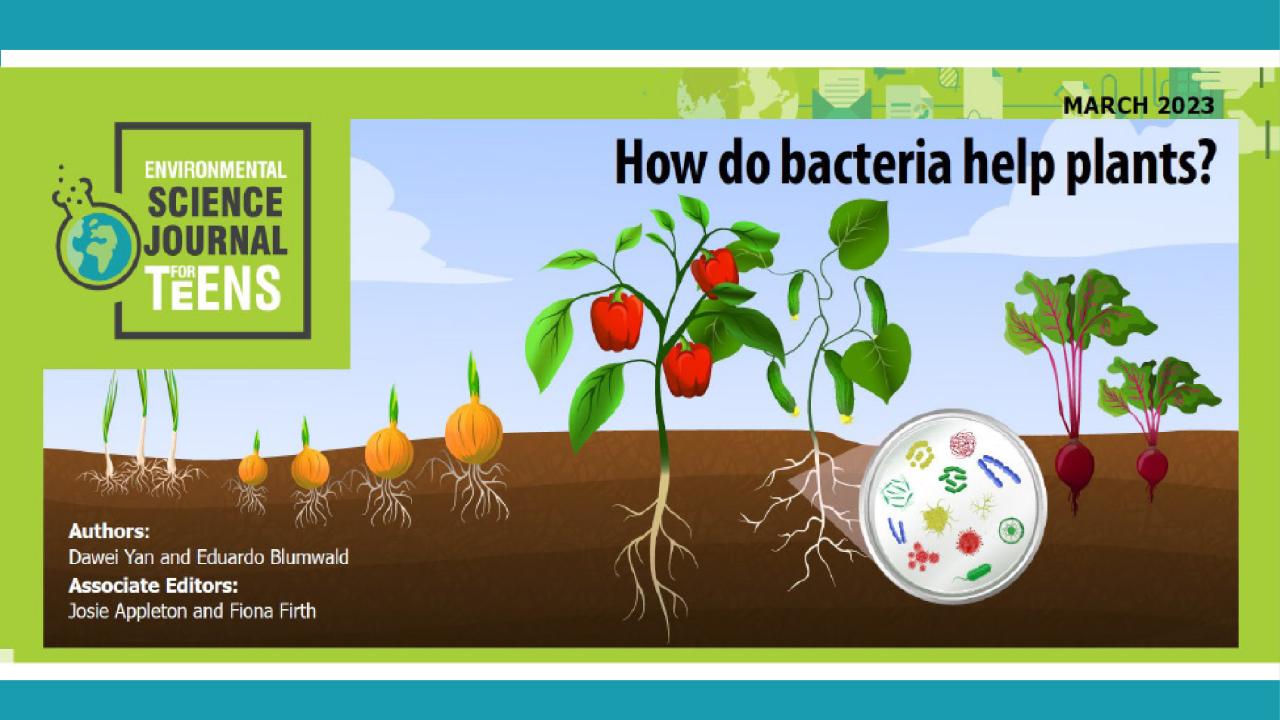
Blumwald’s paper explains science to future scientists
Publication for teens takes up nitrogen fixation
Eduardo Blumwald sees them every year: the freshmen in his courses who wrestle with basic scientific concepts. The father of three knew he could help ‒ by providing relatively simple information about advanced research to high school teachers.

The Texas-based nonprofit publishing house Science Journal for Kids and Teens offered the vehicle. Writers there broke down Blumwald’s research on nitrogen-fixing bacteria in rice into its fundamentals. They presented the material in a format enriched by attractive drawings. Their colorful collaboration, “How Do Bacteria Help Plants?,” was published in Environmental Science Journal for Teens in March, and it’s being distributed to high school science teachers around the nation.
It’s a model that Blumwald encourages other researchers to explore, supporting science education at earlier levels and offering an outlet for publication that reaches a wider audience than scientific journals.
“It’s wonderful to generate material like this for the kids,” Blumwald said. “It’s not enough to criticize pre-university education. Things like this will help.”
Adaptations have wide reach
Already, the adaptation has been downloaded more than 300 times, said Managing Editor Tanya Dimitrova.
High-school volunteers who collaborate with Science Journal for Kids and Teens - mostly sophomores and seniors - browse peer-reviewed journals to suggest papers for adaptation. One of them came across the Blumwald team's paper, and she recommended it, Dimitrova explained.
"This is a valuable experience for them - dipping their toes into academic publishing without having to really understand the published research," Dimitrova wrote. "It's also very valuable for our organization, as we get to engage yet more young people in the scientific process and also get a sense of what topics students are most passionate about these days."
Dimitrova and other publishing house collaborators then worked with Blumwald to produce the teen-appropriate version.
The adaptation starts by framing the narrow science problem in a broad context most teens care about deeply. “The paper illustrates a way to reduce the use of inorganic nitrogen fertilizers, contributing to protect our environment,” Blumwald explained.
He contributed some funds toward the publishing house’s expenses as a donation out of his lab budget, Blumwald added.
In addition to the adaptation, Science Journal for Kids and Teens offers for each paper a teacher’s guide, questions for discussion, ideas for related class projects such as games, links to supplementary materials such as videos, and links to institutions and organizations that offer more information or involvement.
“Our mission is to improve scientific literacy by adapting research papers for school students,” Dimitrova wrote. “Our articles reach hundreds of thousands of students, so it's a great opportunity for (a scientist’s) research to have a broader impact.”
More UC Davis collaborators
Blumwald was the principal investigator on the project. Other Department of Plant Sciences colleagues are lead author Dawei Yan, plus Hiromi Tajima and Howard-Yana Shapiro. Their original paper, “Genetic modification of flavone biosynthesis in rice enhances biofilm formation of soil diazotrophic bacteria and biological nitrogen fixation,” was published in Plant Biotechnology Journal in November 2022.
Other UC Davis researchers’ material also has been adapted for young readers. Results include “What Mutations Does Wheat Hide?,” distilled from a paper published by Jorge Dubcovsky, also in the Department of Plant Sciences, and colleagues.
Media Resources
- Trina Kleist, UC Davis Department of Plant Sciences, tkleist@ucdavis.edu, (530) 754-6148 or (530) 601-6846
